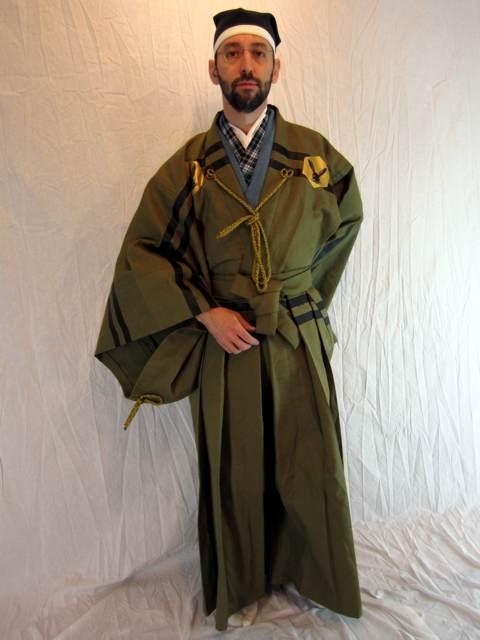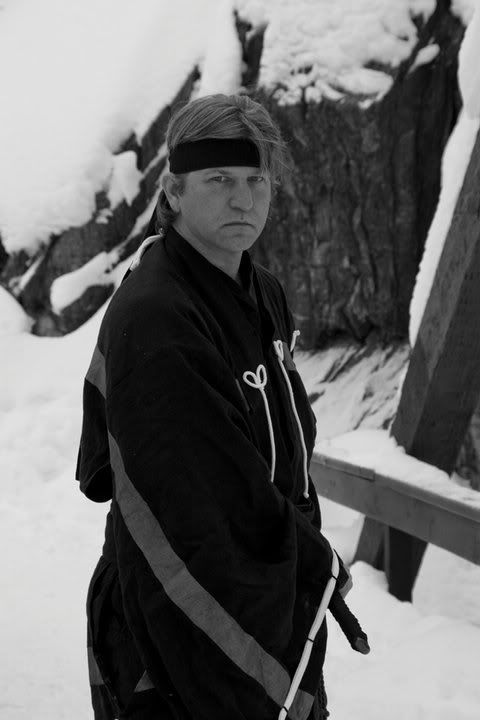|
|
Post by Kagami Tomoko on Nov 20, 2013 1:49:38 GMT -5
First and foremost, I'm just gauging interest at this point but I'm curious: With all this talk of tanka, would people be interested in collaborating on an SCA Ogura Hyakunin Isshu series? For those of you who don't know what Ogura Hyakunin Isshu is, here's the wikipedia article.In my perfect world, participants would write a poem, possibly translate it into Japanese, and then choose a favorite photo of themselves in a dramatic pose akin to the original cards. From the photo, we (me? I? and my trained art monkeys) would redraw the images in a fashion similar to the original deck, incorporating aspects of the person within the image. For instance, if you have an SCA device, that image could be drawing within the clothes. Now, my skills are not in woodblock printing but I'm pretty decent at digital art. However, who knows how far this thing could go! perhaps there's a printmaking/woodblock party in the future! Thoughts? For additional information and inspiration, check out the first 50 images lovingly remastered by the one and only Dave Bull. Aaaand the second set of 50 images all redone using traditional woodblock printmaking. If you're interested, have questions, or feel the need to respond in some other manner, let me know below. |
|
Deleted
Deleted Member
Posts: 0
|
Post by Deleted on Nov 20, 2013 8:37:30 GMT -5
 They say that the clothes make the man, but if that is so, then the man who makes his own clothes sews up his image and identity. |
|
Saionji Shonagon
New Member
 One dreamed of becoming somebody. Another remained awake and became. (Found in a fortune cookie.)
One dreamed of becoming somebody. Another remained awake and became. (Found in a fortune cookie.)
Posts: 7,240
|
Post by Saionji Shonagon on Nov 20, 2013 13:32:04 GMT -5
Playing devil's advocate:
1. It's not clear how old the game is and it may or may not be period. (The classic poems definitely are, however, so it's plausible.)
2. Woodblock printing was around by the end of period, but the ones we most associate with Japanese art are out of period - as are the examples you linked to. (I've seen that site before. Mr. Bull did a beautiful job, btw!) If you're going to reproduce art for SCA use, it might be better to base it on artistic styles from the late 16th c. (If you want to go on a Japanese art book dive at my place some weekend this winter, I've got some things that might give you ideas.)
3. In a perfect world, we would all be erudite enough to write our poems in Japanese - and be able to read them. Most of us are not. I think keeping things in English will allow a greater range of potential players.
4. Play will be slow: none of us are famous classical poets and nobody memorizes our poetry. Finding the matching card could take a bit of a hunt for players.
5. Do we have a hundred poets?
6. I've written hundreds, if not thousands of these things! I don't know how to pick just one of my beautiful babies!!!!
(BTW I own a modern deck and I've never had the opportunity to use it.)
|
|
|
|
Post by akikonomu on Nov 20, 2013 22:01:51 GMT -5
I would be interested. My shamisen sensei could translate my poem(s) into Japanese.
However, since would I imagine that many SCA Japanese don't speak or read Japanese, would it be better to print poems in English?
That being said, it might be difficult to find 100 poets...though a SCA-wide call (and some tanka tips) might draw some additional poets...
|
|
|
|
Post by Kagami Tomoko on Nov 20, 2013 23:50:37 GMT -5
Playing devil's advocate: 1. It's not clear how old the game is and it may or may not be period. (The classic poems definitely are, however, so it's plausible.) 2. Woodblock printing was around by the end of period, but the ones we most associate with Japanese art are out of period - as are the examples you linked to. (I've seen that site before. Mr. Bull did a beautiful job, btw!) If you're going to reproduce art for SCA use, it might be better to base it on artistic styles from the late 16th c. (If you want to go on a Japanese art book dive at my place some weekend this winter, I've got some things that might give you ideas.) Ah, I see you are right. The poems were compiled in period and then possibly painted on screens or scrolls rather than the portraits I'm familiar seeing. It seems, from hasty Googling, that the portraits are attributed to Hishikawa Moronobu from 1694. That means the game is solidly in the Edo period. Perhaps then, to keep the project as close to period as possible, it would be better to create scrolls instead of the card game? I'd be interested in the art book dive nonetheless. Also, Dave Bull's work is wonderful! His reworking of block print masterpieces are an inspiration and treasure to me. I'm currently part of one of his subscription series. Plus it's nice to receive items in the mail that aren't bills or silly credit card offers! 3. In a perfect world, we would all be erudite enough to write our poems in Japanese - and be able to read them. Most of us are not. I think keeping things in English will allow a greater range of potential players. My initial thought on this was to have the poet choose the language but since the game is out of period perhaps this is mute. -OR- we could use Kai-Awase as our base instead of Ogura Hyakunin Isshu. 5. Do we have a hundred poets? 6. I've written hundreds, if not thousands of these things! I don't know how to pick just one of my beautiful babies!!!! We might not have 100 poets but as we get new ones we can add to the set. -OR- We could always use multiple poems from one writer so long as the poem is about or referencing someone. (BTW I own a modern deck and I've never had the opportunity to use it.) I know the feeling. I had to make a deck to finally play hanafuda with my friends. Perhaps we can learn the game together! Also, feel free to be my Devil's Advocate! It has proven to be one of the best ways for me to learn. |
|
Saionji Shonagon
New Member
 One dreamed of becoming somebody. Another remained awake and became. (Found in a fortune cookie.)
One dreamed of becoming somebody. Another remained awake and became. (Found in a fortune cookie.)
Posts: 7,240
|
Post by Saionji Shonagon on Nov 21, 2013 0:18:15 GMT -5
|
|
Saionji Shonagon
New Member
 One dreamed of becoming somebody. Another remained awake and became. (Found in a fortune cookie.)
One dreamed of becoming somebody. Another remained awake and became. (Found in a fortune cookie.)
Posts: 7,240
|
Post by Saionji Shonagon on Nov 21, 2013 0:26:13 GMT -5
Darn, my copy of "Asian Games" is unenlightening on a date for the development of Hyakunin Isshu. That's no help. It does have some aspects in common with Kai-awase, the shell matching game. I'll see if I can dig up anything further.
|
|
Lash
New Member
 perfection isnt an end result but a path to walk upon with your eyes closed.
perfection isnt an end result but a path to walk upon with your eyes closed.
Posts: 422
|
Post by Lash on Dec 23, 2013 16:39:29 GMT -5
 hunters eye narrows stillness in the blood thunder the great wave crashes (nami gai ishi?) crimson fan on silk blanket divine wind abates in breath did I do that right? |
|
|
|
Post by Yamanouchi Eidou on Dec 27, 2013 10:27:20 GMT -5
Playing devil's advocate: 1. It's not clear how old the game is and it may or may not be period. (The classic poems definitely are, however, so it's plausible.) Well the name of the game is uta-garuta (singing cards). Given the name "Karuta" the concept of the cards was probably introduced by the Portuguese, with something like kai-awase (Shell matching) being more popular previous to that introduction. Between the etymology of the name and the inclusion of wood-block printing, there's a pretty heavy implication there of the game being an Edo period invention, although these two piece sof information are hardly a definitive argument. However, I like the idea of a collection of poems by Scadian poets in this japanese style. A codex of scroll or even just loose pages with Japanesque (I made up that word) decoration could be pretty fun. It looks like the hyakunin isshu itself (Which is to say, the collection) dates to well within the Heian Period, and at that time the primary form of decoration was the calligraphy rather than portraits to go with them. I like that idea as well. |
|
|
|
Post by Kagami Tomoko on Jul 28, 2014 23:59:16 GMT -5
So as not to completely highjack this thread, I have created a separate posting for my future/current Kai Awase set here. Cross posting only briefly just in case you missed it. |
|